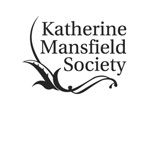Essay Prize
The Essay competition for 2020 has now closed and the winner will be announced in due course. The competition for 2021 will go live early in the New Year.
ESSAY PRIZE COMPETITION #12 2020
The co-editors of Katherine Mansfield Studies are pleased to announce that the 2020 Essay Prize for a scholarly essay on the theme of Katherine Mansfield and Childhood has been awarded to Dr Tracy Miao. Her essay, ‘Casting a “haunting light”: Katherine Mansfield’s Modernist Vision of Childhood’ impressed the judges with the illuminating connections it makes between Mansfield’s fiction and Peter Pan, and the subtlety with which it teases out the interplay of Modernist and Edwardian elements in Mansfield’s writing about childhood. Chair of the Judging Panel, Professor Anna Jackson, notes how biographical details are written about with the same assurance and attentiveness that Dr Miao brings to the analysis of scenes from the fiction, not only contributing to our understanding of childhood in Mansfield’s work but also to Modernist and Edwardian concepts of gender, sexuality and romance. Dr Miao is a lecturer in English at Xi’an International Studies University in China where she teaches literature as well as language courses. She has published several essays and book chapters on Katherine Mansfield and has recently contributed an essay on ‘Katherine Mansfield and the East’ to the forthcoming Bloomsbury Handbook to Katherine Mansfield, edited by Todd Martin.
This year’s essay submissions were of such a high standard that very difficult choices had to be made by judges Anna Jackson, Donna Couto, and Gerri Kimber. Also commended were three further essays. ‘Katherine Mansfield’s Play Aesthetics’, by Imola Nagy-Seres, University of Exeter, UK, illuminates the satirical bite of scenes and details of domestic discord in Mansfield’s fiction while casting a new light, too, on the progressiveness of the Montessori method of education which was newly fashionable when Mansfield was writing. Full of beautifully observed detail and sharp comparisons, the essay conveys both Mansfield’s sympathy for children and for childhood creativity, and her sharp eye for social absurdities and adult superficiality. ‘Kezia a “ninseck”, Kezia the Bee’, by Dr Janka Kascakova, Catholic University in Ruzomberok, Slovakia, focuses on the moment in part IX of ‘At the Bay’ when Kezia decides, against the implied rules of the game which is being played, to take on the character of a bee. Following its symbolic connotations, from European folklore as a ‘messenger between the living and the dead’ to classical mythology as a poet-prophet, the close attention this essay gives to Kezia’s ‘ninseck’ places it on a level of importance with the ‘little lamp’ of the doll’s house. Last, but not least, the absorbing and sophisticated essay, ‘Katherine Mansfield’s Sleeping Boys’, by Dr Erika Baldt, Rowan College at Burlington County, USA, explores the aestheticisation of death in the work of Katherine Mansfield in the light of the First World War, drawing detailed, compelling parallels with classical Greek imagery. All four essays will be published along with several others on the theme in Katherine Mansfield Studies, vol. 13, which will appear next year.
A detailed MHRA style guide is available from the Katherine Mansfield Society website:
http://www.katherinemansfieldsociety.org/yearbook-katherine-mansfield-studies/

